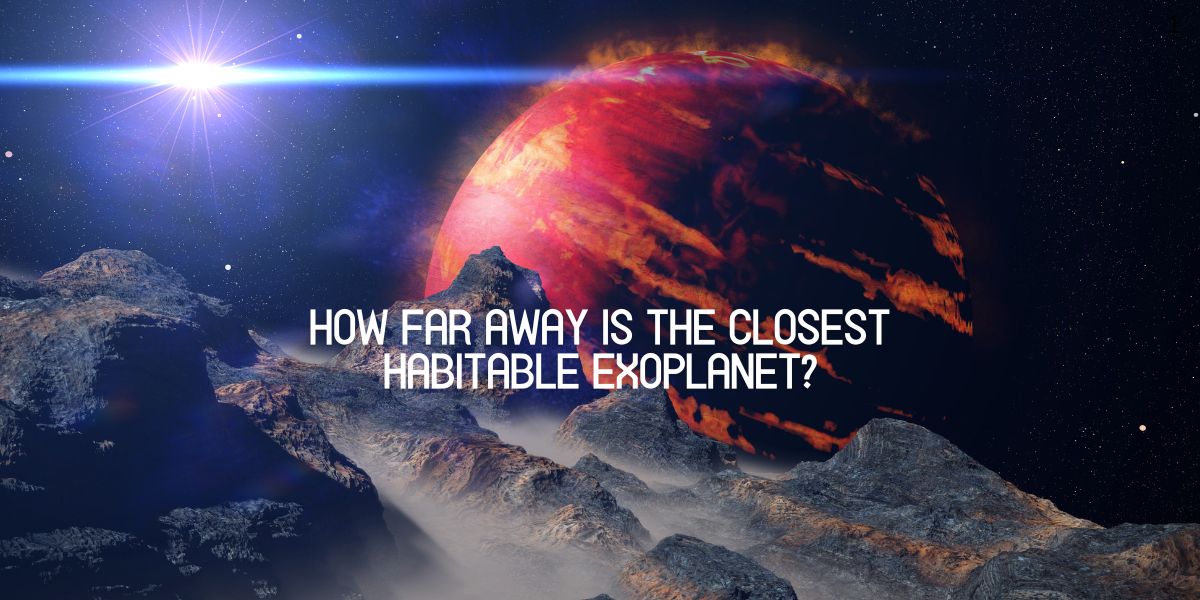
Have you ever looked up at the stars and wondered if there’s another planet like Earth out there? Scientists have discovered thousands of planets outside our solar system, called exoplanets. Some of these could have the right conditions for life—water, air, and a comfortable temperature.
The closest habitable exoplanet might be closer than you think! But how far is it? And could humans ever live there? Let’s explore this exciting topic in simple words.
What Is an Exoplanet?
An exoplanet is a planet that orbits a star outside our solar system. Just like Earth moves around the Sun, exoplanets move around their own stars. Scientists have found over 5,000 exoplanets so far, and new ones are discovered all the time.
- Some exoplanets are rocky like Earth.
- Others are gas giants like Jupiter.
- A few are in the “Goldilocks Zone”—where it’s not too hot or too cold for life.
Finding exoplanets is like searching for a tiny firefly next to a giant spotlight because stars are much brighter than their planets.
What Makes an Exoplanet Habitable?
Not all exoplanets can support life. A habitable exoplanet needs:
- Liquid water – Without water, life as we know it can’t exist.
- The right temperature – Too close to its star, and water boils. Too far, and it freezes.
- A stable atmosphere – Air to breathe and protection from harmful space rays.
Example: Earth is in the Sun’s Goldilocks Zone. Mars is too cold, and Venus is too hot. Scientists look for exoplanets in similar zones around other stars.
How Do Scientists Find Exoplanets?
Finding exoplanets is tricky because they don’t produce light. Scientists use smart methods:
- Transit Method – When a planet passes in front of its star, the star’s light dims slightly.
- Radial Velocity – A planet’s gravity makes its star wobble, which changes the star’s light color.
- Direct Imaging – Using powerful telescopes to block the star’s light and see the planet.
NASA’s James Webb Space Telescope is helping scientists study exoplanets in more detail than ever before!
What Is the Closest Habitable Exoplanet?
The closest known habitable exoplanet is Proxima Centauri B.
- Distance: About 4.24 light-years away.
- Star: Orbits Proxima Centauri, the closest star to the Sun.
- Possible Conditions: Could have liquid water if it has a thick atmosphere.
But there’s a problem—Proxima Centauri is a red dwarf star, which means it gives off strong solar flares. These flares might make life hard there.
Could Humans Ever Travel to Proxima Centauri B?
Right now, traveling to Proxima Centauri B is almost impossible with today’s technology.
- Fastest Spacecraft (Parker Solar Probe): Goes 430,000 miles per hour.
- Time to Reach Proxima b: Over 6,000 years!
- Possible Future Tech: Scientists are working on ideas like light sails or nuclear propulsion to make the trip faster.
Maybe one day, humans will find a way to visit—but not anytime soon!
Are There Other Nearby Habitable Exoplanets?
Yes! Scientists keep finding more candidates. Some interesting ones:
- TRAPPIST-1 System (39 light-years away): Has seven Earth-sized planets, three in the habitable zone.
- Teegarden’s Star b (12 light-years away): A possible Earth-like planet with mild temperatures.
The search continues, and new discoveries happen every year!
Conclusion
The closest habitable exoplanet, Proxima Centauri B, is just 4.24 light-years away. That’s very close in space terms but still too far for humans to visit right now. Scientists are working hard to find even closer Earth-like planets and better ways to explore them.
What do you think. will humans ever live on another planet?
📌 Frequently Asked Questions
What is the closest exoplanet to Earth?
The closest known exoplanet is Proxima Centauri b, about 4.24 light-years away. It orbits the closest star to the Sun, Proxima Centauri.
Can humans live on Proxima Centauri B?
Maybe, but it’s risky. The planet gets strong solar flares from its star, which could make survival difficult without special protection.
How long would it take to travel to Proxima Centauri B?
With current technology, it would take thousands of years. Future tech, like light sails, might shorten the trip to a few decades.
How do scientists know if an exoplanet is habitable?
They look for signs like liquid water, the right temperature, and a stable atmosphere using telescopes like the James Webb Space Telescope.
What is the Goldilocks Zone?
It’s the area around a star where temperatures are just right, not too hot or too cold, for liquid water to exist.
Has NASA found any Earth-like exoplanets?
Yes! Planets like Kepler-452b and some in the TRAPPIST-1 system are Earth-sized and in the habitable zone.
Will we ever visit an exoplanet?
Not with today’s technology, but scientists are working on faster space travel methods for the future.
How many habitable exoplanets are there?
Scientists have found about 60 potentially habitable exoplanets so far, but more are being discovered.
What is the best telescope for finding exoplanets?
NASA’s James Webb Space Telescope is the most advanced tool right now for studying exoplanets.
Could there be life on Proxima Centauri B?
It’s possible! If the planet has water and a good atmosphere, microbes or other simple life might exist there.
Leave a Reply